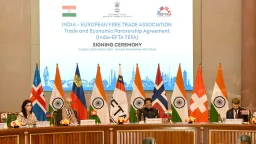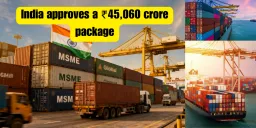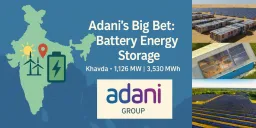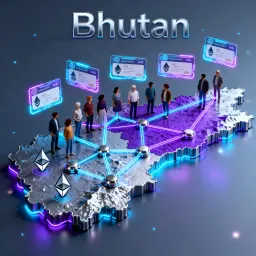India Secures First-Ever U.S. Cooking-Gas Deal: A Strategic Pivot

India has awarded its first long-term tender to import liquefied petroleum gas (LPG) from the United States - a landmark deal that signals a shift in its energy sourcing and trade strategy. The deal goes to Chevron Corporation, Phillips 66 and TotalEnergies Trading SA, all of whom will supply U.S.-origin LPG starting in 2026 under a joint purchase of roughly 2 million metric tons, or about 48 very-large gas-carrier shipments.
Why this deal matters
Energy diversification: Until now, India has sourced over 90 % of its cooking-gas imports from the Middle East (Saudi Arabia, UAE, Qatar etc). By planning to import ~10 % from U.S. starting 2026, India is both broadening its supplier base and reducing dependency on a single region.
Trade-and-geopolitics: The move aligns with India’s ambition to deepen energy ties with the U.S. and help narrow its large trade deficit with Washington - a strategic objective given recent tariff pressures.
Economic and consumer impact: LPG is the cooking fuel for hundreds of millions of Indian households. A long-term U.S. supply deal could improve supply stability, possibly pricing dynamics, and strengthen the domestic energy supply chain.
Key deal highlights
Tender awarded jointly by three state refiners: Indian Oil Corporation Ltd. (IOC), Bharat Petroleum Corporation Ltd. (BPCL), and Hindustan Petroleum Corporation Ltd. (HPCL).
Volume: about 2 million metric tons starting 2026 (~48 VLGCs).
Suppliers: Chevron, Phillips 66, TotalEnergies trading division.
Flexibility: The contract allows suppliers to deliver LPG of any origin for one out of every four cargoes - providing logistics and sourcing flexibility.
Planning target: ~10 % of India’s LPG imports to come from the U.S. starting 2026.
Implications and challenges
Positive outcomes:
India could gain greater bargaining power with Middle-East suppliers, as diversification may lead to more competitive pricing.
The deal aligns with the Indian government’s broader push for energy security, supply-chain resilience and geopolitically prudent sourcing.
U.S. exporters gain access to a large, growing market for LPG, potentially strengthening U.S.–India energy cooperation.
But some caution points:
Shipping cost and freight logistics: U.S. LPG has historically had higher freight costs to India compared to Gulf supplies - this will remain an important variable.
Contract pricing & terms are undisclosed: Without full transparency, benefits to India in terms of cost savings remain speculative.
Domestic policy & subsidy interplay: LPG in India is heavily subsidised for households; how this deal shifts domestic pricing dynamics remains to be seen.
Middle East reaction: Existing Gulf suppliers may respond with pricing changes or contract renegotiations - Saudi Aramco has already trimmed official propane/butane prices following India’s diversification signals.
What to watch next
Final signing and transparency of the contract terms (pricing, cargo breakdown)
Implementation: actual deliveries in 2026 and how smoothly supply chains execute
Impact on LPG import shares from Gulf countries over the next 2-3 years
Any linkages with broader U.S.-India trade or energy agreements
Domestic consumer impact: Will this translate into price stability or subsidy rather than cost-increase?
TL;DR
India’s first long-term U.S. LPG import deal - awarding ~2 million metric tons from 2026 onwards - marks a strategic pivot in its energy sourcing and trade diplomacy. It strengthens India’s stance on diversification, energy security and global trade alignment. While the benefits are clear, the true impact will depend on contract execution, cost dynamics, and how this reshapes supplier relationships going forward.








